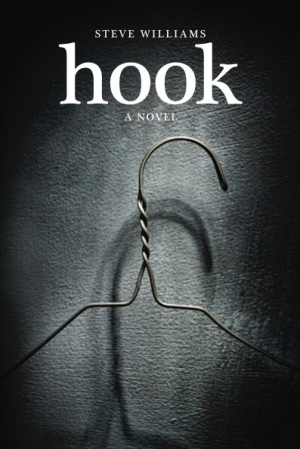It looks like you've stumbled upon a page meant to be read by our code instead of viewed directly. You're probably looking for this page.
Hook
In the compelling mystery novel Hook, the social roles of killer and victim are reversed.
In Steve Williams’s mystery novel Hook, an investigation into a hit and run exposes trauma and revenge.
From years of dedicated work on the police force, Detectives Mitchell and Sandovan know that nobody is perfect. Still: their latest victim pushes the limits of their sympathy. Hated by his coworkers, Devin engaged in online flame wars. When he’s killed in a hit and run, there’s little evidence, and everyone who knew him could be a suspect. The actual perpetrator is an average, quiet man whose tragic history compelled his actions. The question isn’t who did it, but whether Detectives Mitchell and Sandovan will prove the truth.
Mitchell and Sandovan approach the stereotypes of hardened detectives, with years of service between them and the sharpened intuition that comes with experience. Their fact-finding expeditions involve trading observations and ideas with each other over donuts and golf swings. Their exchanges involve dry humor; this extends to exchanges with fellow force members, many of whom have cultivated levity as a coping skill.
Experiential details, as of the history of a police badge, are woven into the book’s authentic conversations, while bureaucracy and backdoor dealings are exposed in interactions with other officers, IT workers, lawyers, union representatives, and politicians. But the novel is part of a series, and some familiarity with this force seems to be taken for granted; the detectives sound similar, and seem to fill similar roles.
Mitchell’s girlfriend, Mya, shares part of the narrative. She’s a successful business woman, and Mitchell is a supportive partner. Their mutual understanding about their chosen career paths adds a sense of warmth to the story, though Mitchell is also forced to keep a secret from Mya on her father’s behalf, leading to tension. Still, Mya is a welcome presence who lends a sense of empowerment to the otherwise mystery-focused book. Sandovan’s relationship is less developed: there’s an infidelity-laced subplot, but it’s disconnected from the rest of the story.
The killer’s identity is known, and his abusive childhood is a clear plot point. But his motivations and thought processes are under explored; he fancies himself a hero, but also antagonizes the police as they flounder on his case, leading the detectives to his doorstep. The book’s tension is preserved as the detectives scramble to put the evidence together. Still, empathy builds for the killer, not his victim, who is both abrasive and mean, leading to questions about the meaning of justice and the police’s ability to act impartially. A surprise incident near the end reveals a different side to Mitchell, promoting understanding and leading to a controversial choice; interest is generated for the next installment.
In the mystery novel Hook, the social roles of killer and victim are reversed, and questions are raised about what it means to make the right decision in an unfair world.
Reviewed by
Delia Stanley
Disclosure: This article is not an endorsement, but a review. The publisher of this book provided free copies of the book and paid a small fee to have their book reviewed by a professional reviewer. Foreword Reviews and Clarion Reviews make no guarantee that the publisher will receive a positive review. Foreword Magazine, Inc. is disclosing this in accordance with the Federal Trade Commission’s 16 CFR, Part 255.
